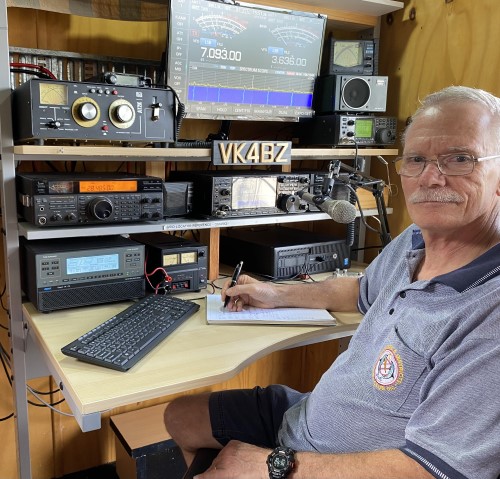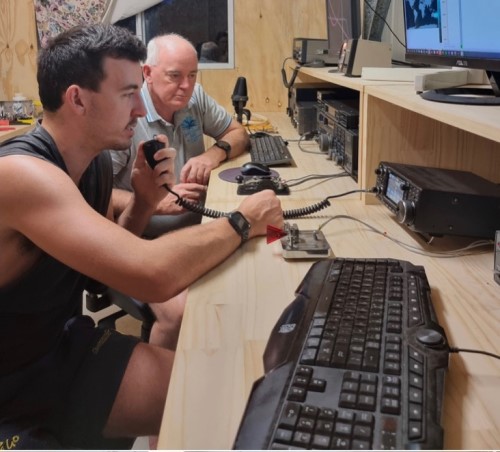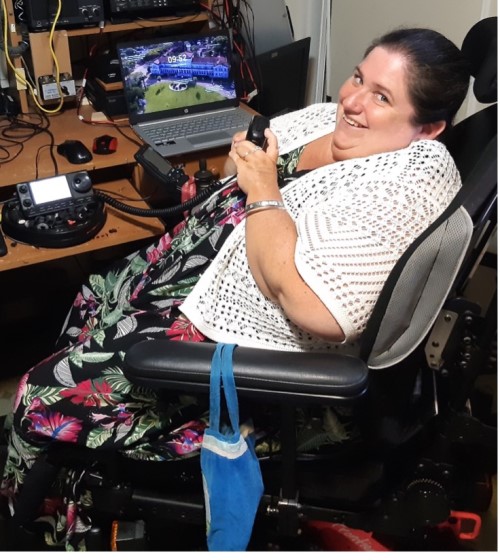Looking to connect? Just get on the radio

By John Saunders
President, Redcliffe and Districts Radio Club
Coordinating Chaplain, 8th Brigade, Australian Army
These days most people view Ham Radio as a sort of historical sci-fi, but gone are the days of dimly lit sheds, glowing dusty valves, and a plethora of mysterious dials and switches.
No longer the domain of bespectacled old men hunched over Morse Code keys tapping away, modern Amateur (Ham) Radio is a global hobby well and truly in the digital age. It utilises software-defined equipment, ultra-modern transceivers and built-in touch screen interfaces. We’re communicating via satellite tracking or bouncing signals off the moon, as well as off the invisible ionosphere.
Ham Radio has come a long way.
Communications modes these days are diverse. There are still some of us who use the old faithful Morse Code, but today even the more modern AM, FM and SSB (Single Side Band) have been supplemented by all forms of digital modes, including digital voice over the air and via interconnected computer systems.
If there is a new mode and a new frequency to be developed, Ham Radio operators will be there experimenting. One of the most exotic modes I’ve come across involves digital communications at microwave frequencies, bouncing signals off the fuselages of distant aircraft to boost signal ranges.
For those who are technically minded, the sky is no longer the limit with what you can do, what you can construct, and what you can learn. If you can communicate with it, generally we can build it and perfect it.

People who love to communicate, like this Padre, can engage with people down the street, across town or literally around the world. Did I mention chats with astronauts on the International Space Station (ISS)? The ultimate fail-safe for ISS communications is Amateur Radio and all astronauts on the ISS are licenced to operate, and (albeit infrequently) they do.
Ham Radio operators, both men and women, are drawn from all walks of life: doctors, scientists, teachers, caterers and engineers. All of us share a common interest in electronics and communications, and yes, we can still build our own equipment and antenna systems!
There seems to be a uniquely high percentage of military and ex-military people involved in the hobby. I guess the camaraderie and the technical nature of what we do appeals to the military type. We are accustomed to working in a regulated environment, and Ham Radio has those familiar left and rights of arc, yet it is technical. Those of us trained in RATEL (radio telephony) will find the transition to the hobby second nature.
Within that familiarity there is tremendous freedom for enjoyment and life enrichment. Mateship with like-minded people is still pivotal to our identity and so it is in the Ham Radio community.
In our club, a large slice of our membership are ex-servies and quite a number of us are veterans. We are drawn from all 3 services and across the enlisted and officer ranks. A signals background is an obvious drawcard, but not a prerequisite. We all come from a variety of corps, trades and musterings. I recently even discovered my (serving) Brigade Commander also holds an Amateur licence.
Ham Radio opens up a broad vista of community and engagement for people with mobility issues – disability is no limitation. My club has members with mobility issues, including one lady who is wheelchair- bound, and even for those with visual impairment, whom we call “white-stick operators”.
During COVID-19 when everyone was locked down and unable to meet with their friendship groups, Ham Radio operators were non-plussed. We simply continued doing what we always do and got on the nets and radio bands as we always did. Yes, we were unable to meet up at our usual club haunts, but we were still able to engage in our communities via radio.

Entry to the hobby is open to anyone and everyone with a technical itch to scratch. Unlike the familiar UHF CB (citizens band) radio under the dash of your 4x4, or 27MHz CB from your teenage memories, Ham Radio requires technical training, exams and formal licencing. But getting the entry level foundation licence is not at all onerous. Amateur Radio clubs like ours provide weekend training and exams to get people up to speed and on-air as soon as possible.
No matter where you live in this great country, there will be a nearby group of Ham Radio operators. The easiest way to find us is through the Wireless Institute of Australia – all you need to know is at www.wia.org.au. Come along to a nearby club, meet the people and check out the hobby!
Images:
Army Chaplain John Saunders
Daniel Pritchard is on the radio while his father Laurie, a veteran of the Royal Australian Corps of Signals, listens in.
Ham Radio enthusiast Wendy Cosgrove